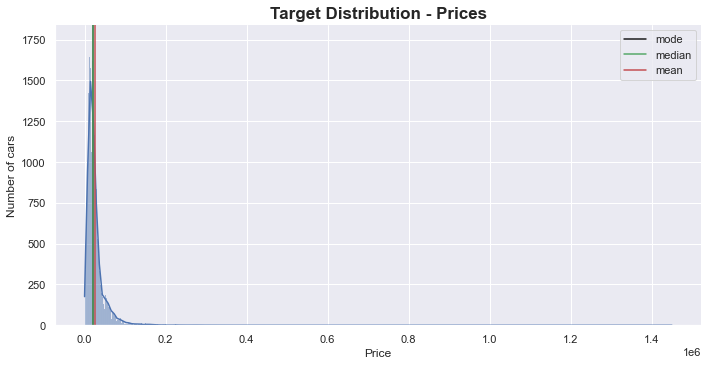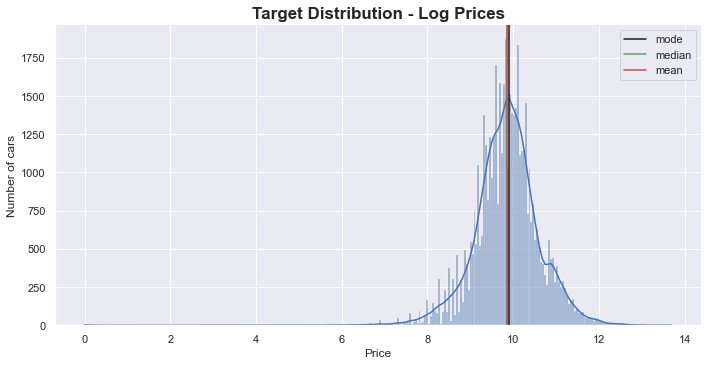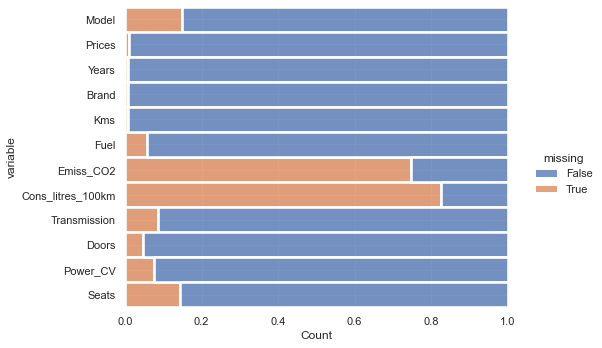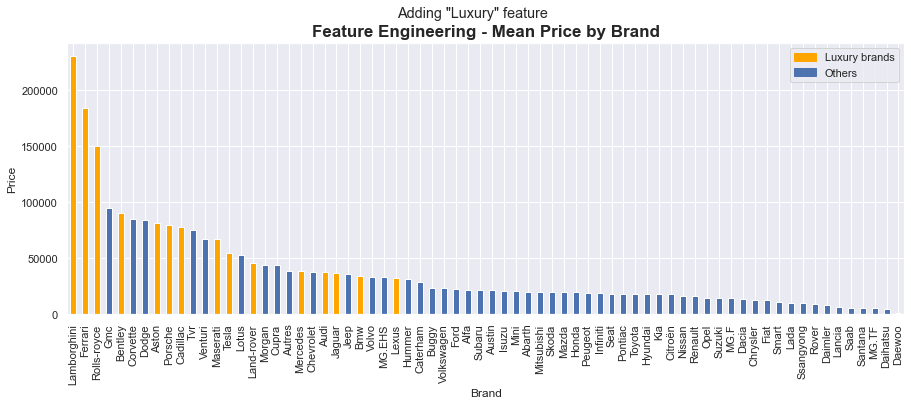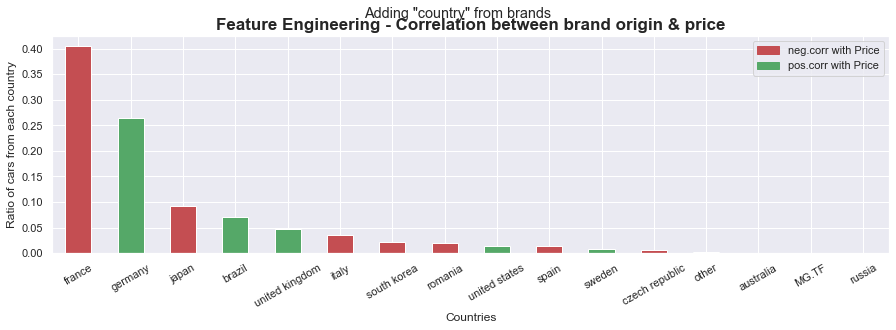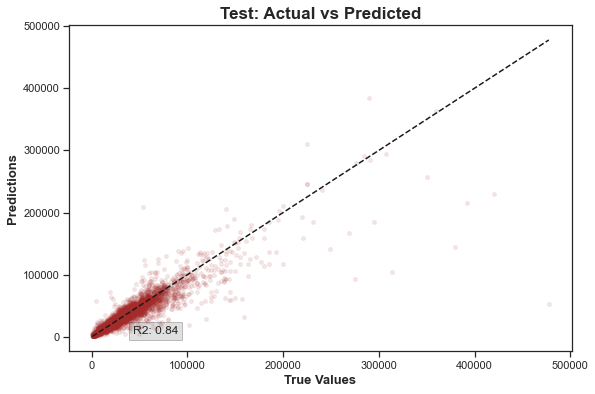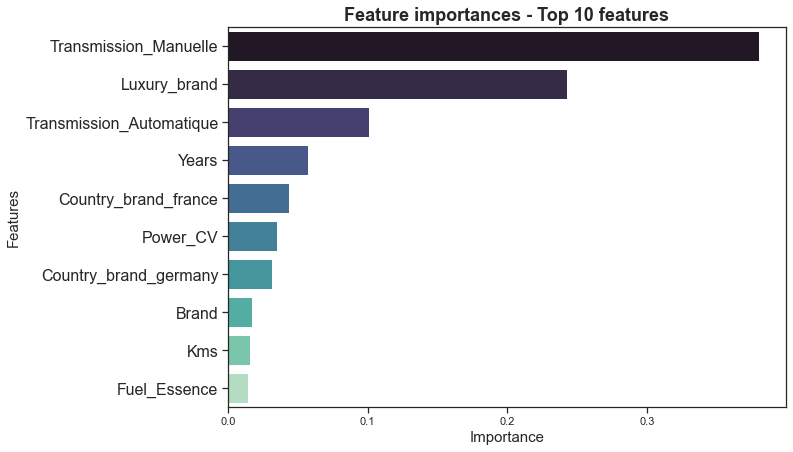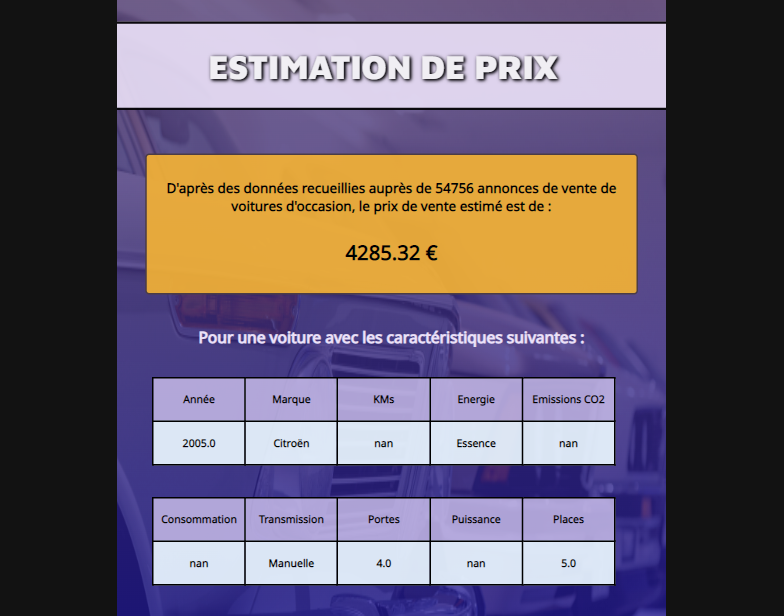1. Objective
Buying and selling a car can be an important financial decision, and thus being able to estimate the selling price of a car is very important.
The objective of this project is to create a web application that allows for user input to estimate the selling price of a car given a number of features using a machine learning estimator and real data collected from the web.
2. Overview
# Preprocessing
More than 50,000 ads on second-hand cars were collected from a popular french site. Complementary data was also extracted to better encode brands.
The preprocessing was done in two steps:
- First, an Exploratory Data Analysis was conducted on the training set to know how to best clean the data
- Then, some preprocessing was applied to the entire dataset (dropping unnecessary features, fixing data errors) then most of the preprocessing was applied to only the raw training set
# Modeling
The model training included four steps:
- Choosing the metrics to measure performance: RMSE, MAE & R²
- A first round of modelling, as benchmark, using 7 different algorithms (LinearRegression, KNeighbors, AdaBoost, ...)
- Selecting the 2 best models to be fine tuned using k-fold cross validation
- After comparison, exporting the best model as a pickle file to be later applied on the test set
Following the steps of the preprocessing, a complete pipeline was constructed to clean the test set and apply the fine-tuned model.
The final performance (measured after applying the final model on the test set) is:
| Models | RMSE score | MAE score | R² score |
|---|---|---|---|
| XGBRegressor | 8883 | 3803 | 0.871 |
# Deployment
The deployment of the model was achieved in three steps:
- The code used for the previous steps was translated from jupyter notebooks (research environment) to python scripts (production environment).
- The scripts were designed as a local package, with init files, and configuration was handled using a .yml file.
- Finally, a web application was built using Flask, HTML and CSS code, and deployed on Heroku.

